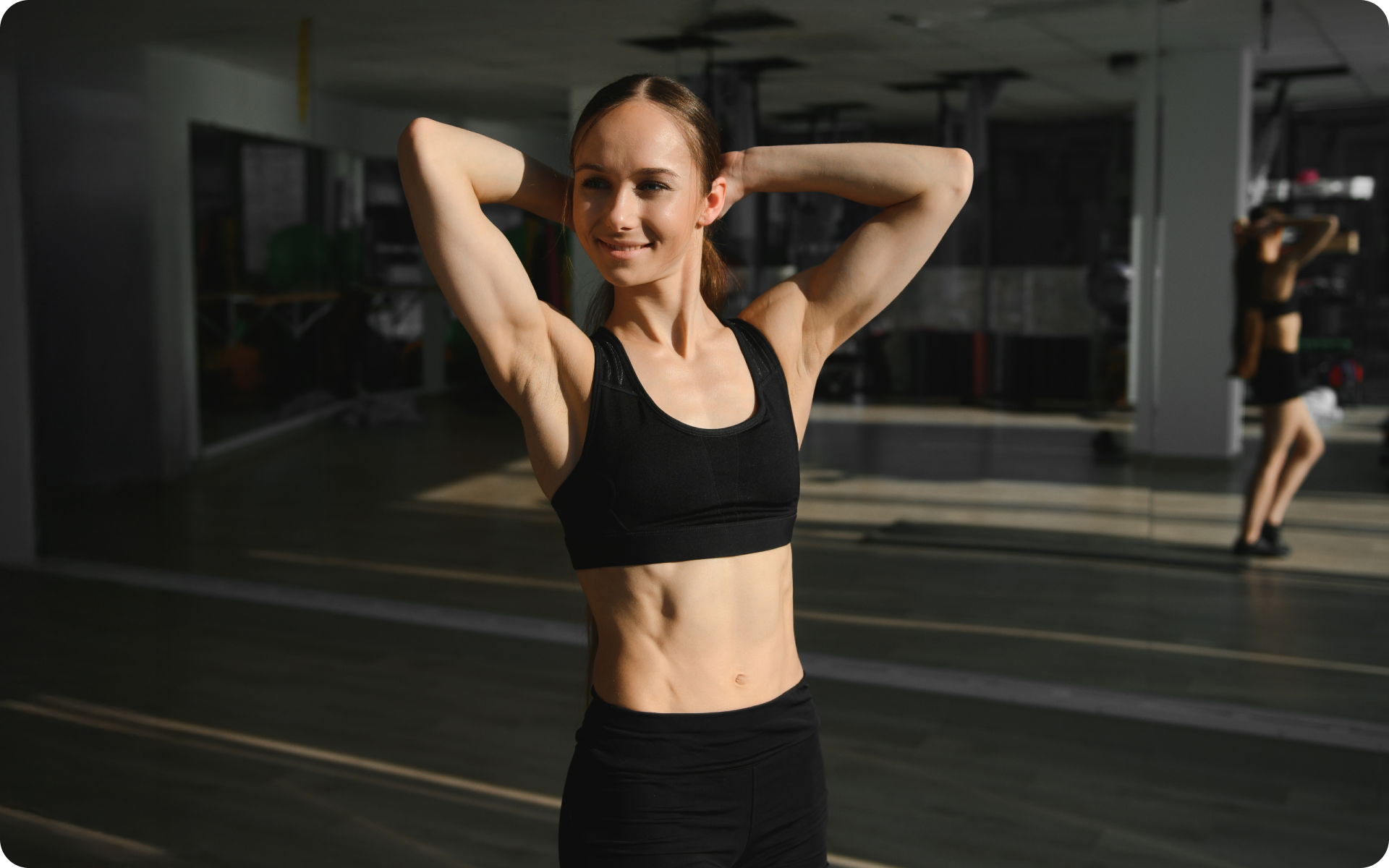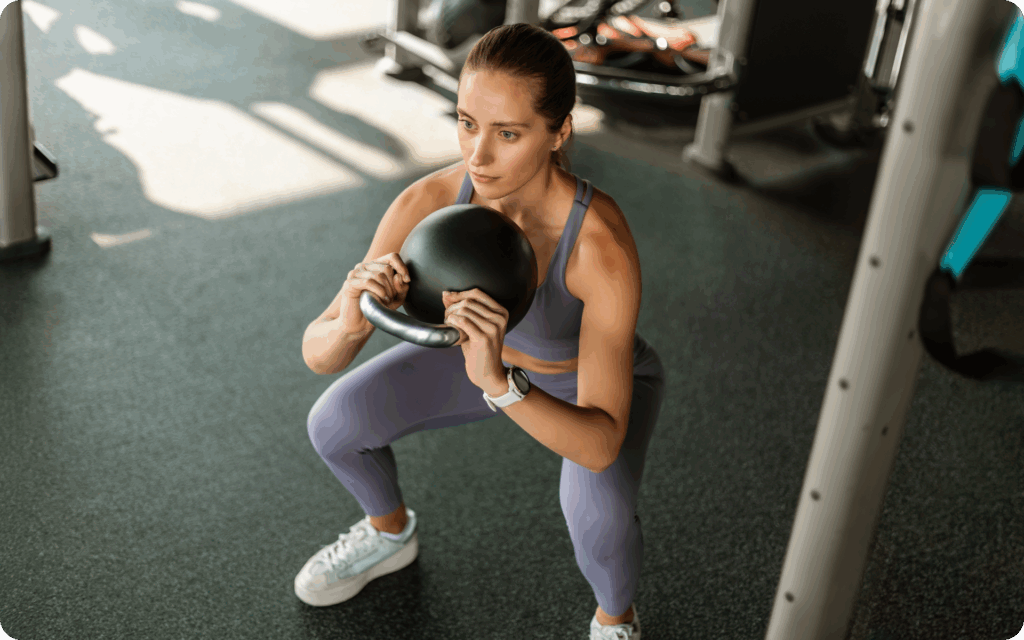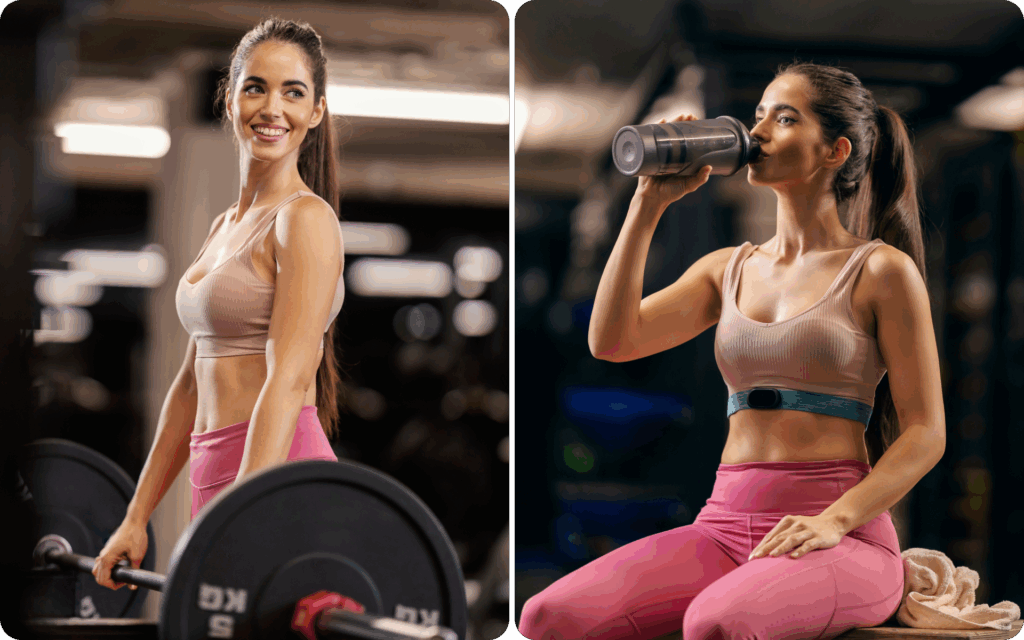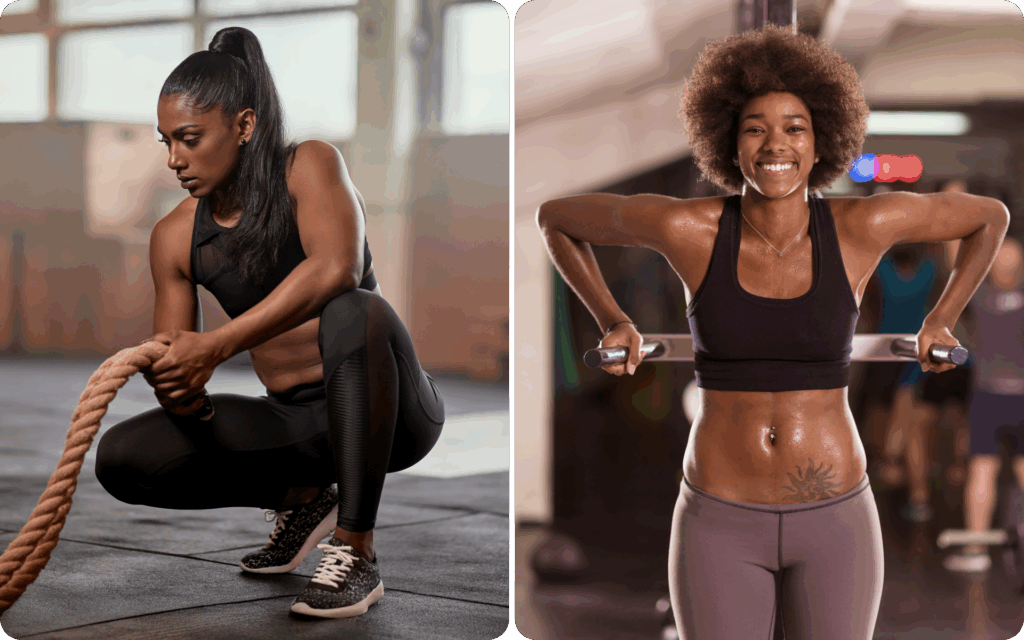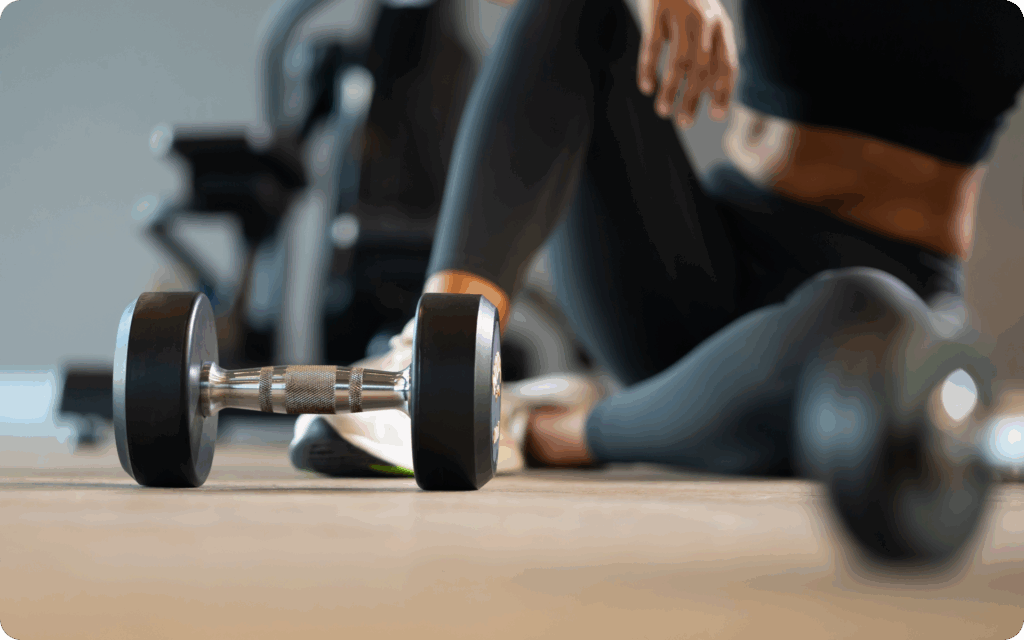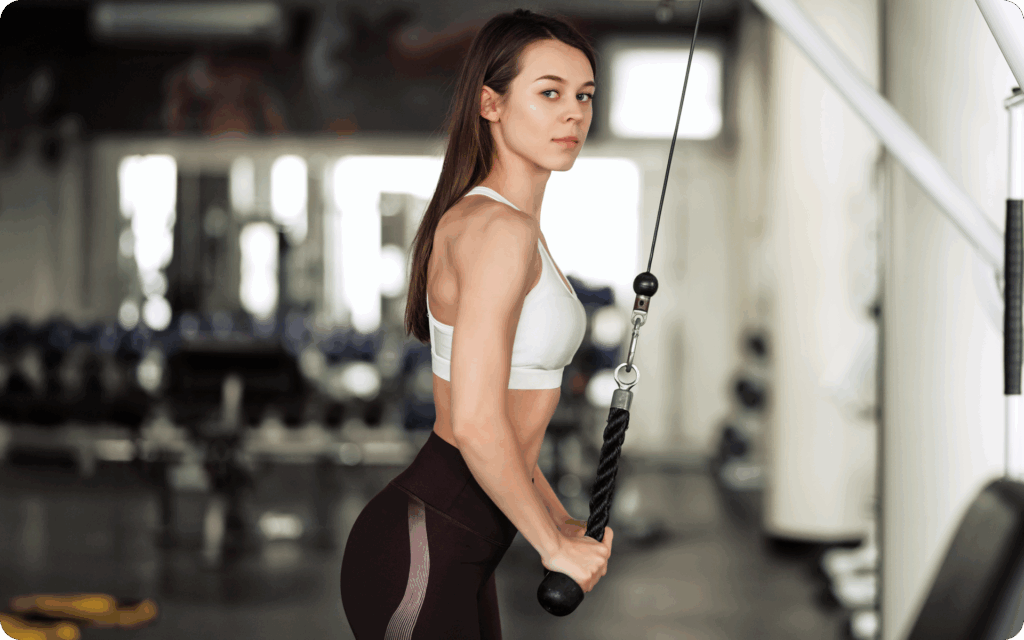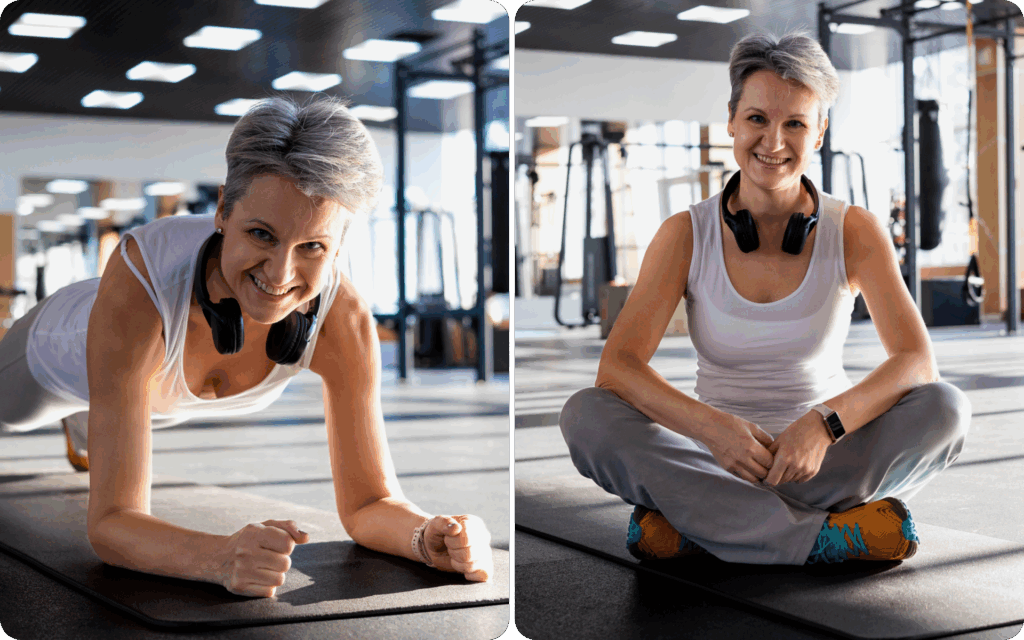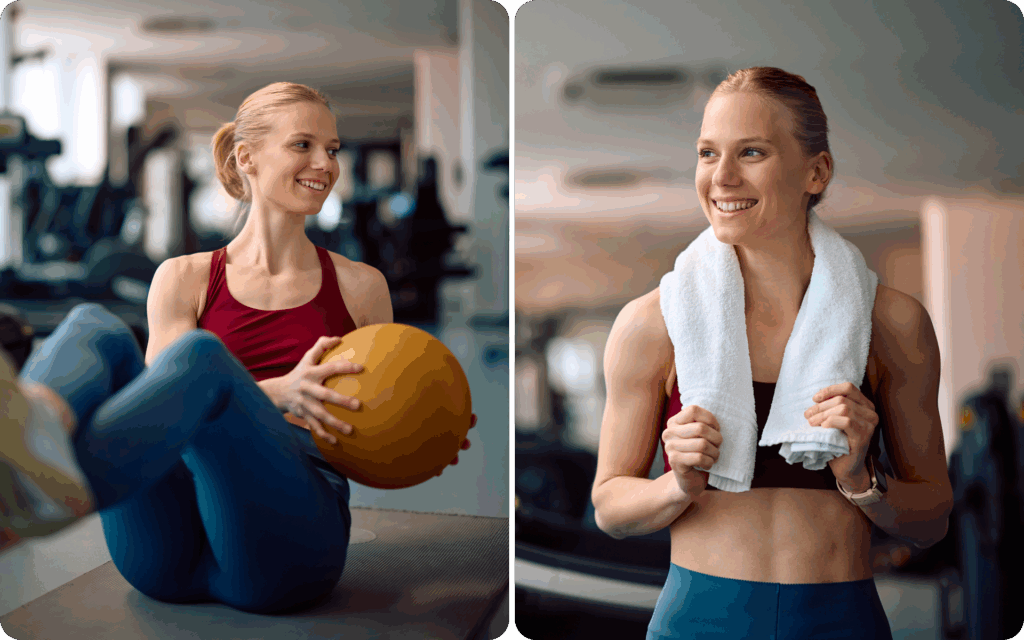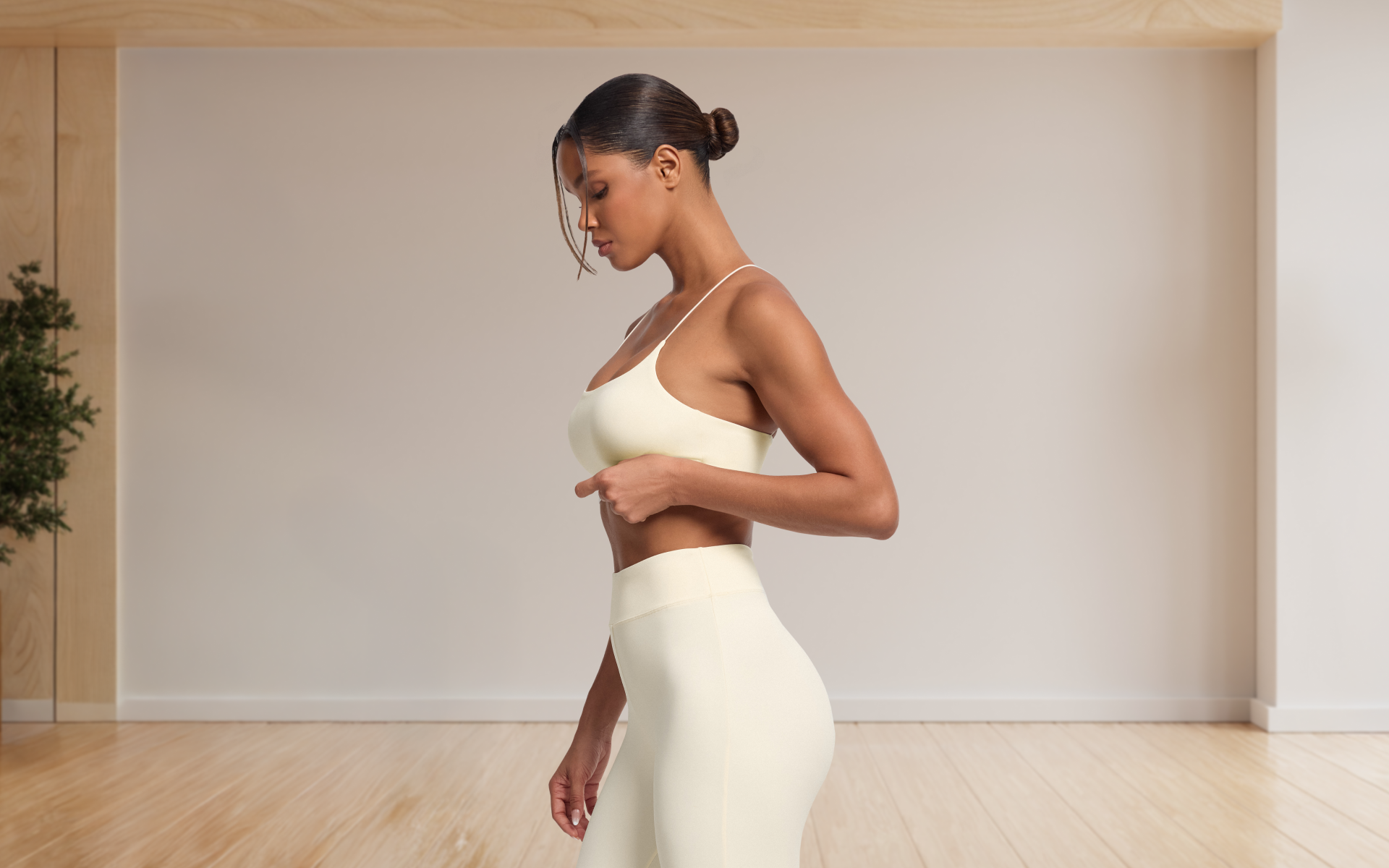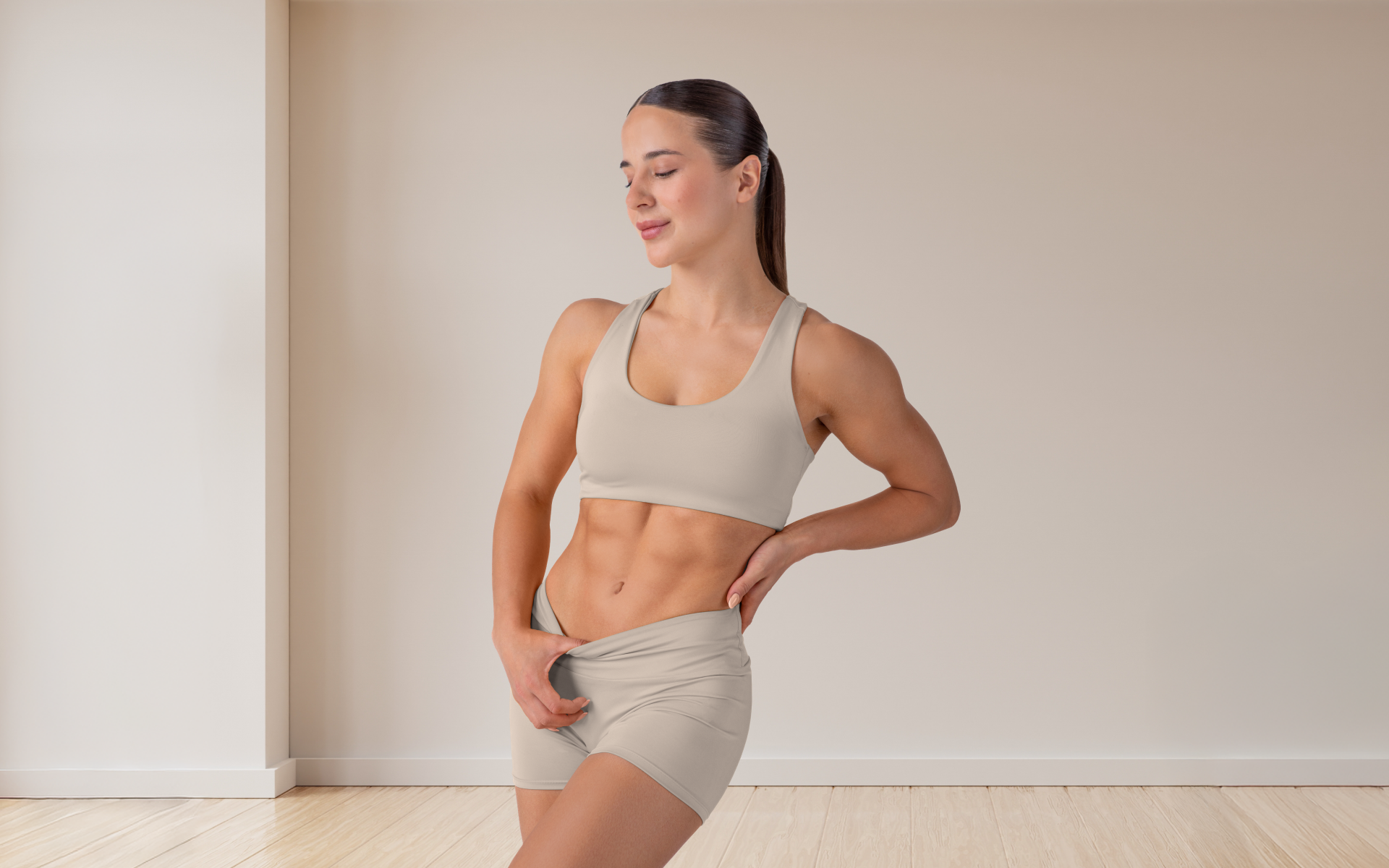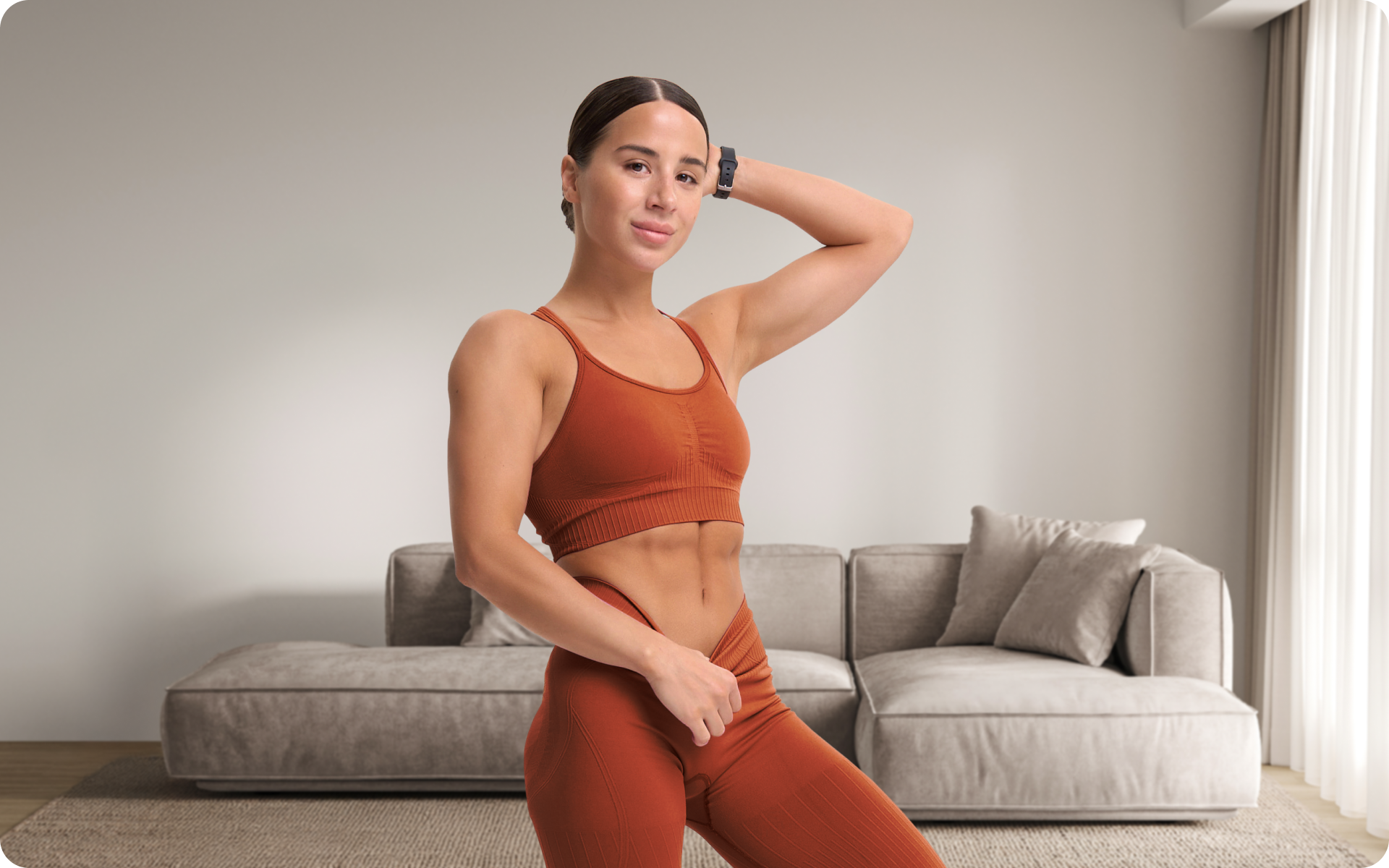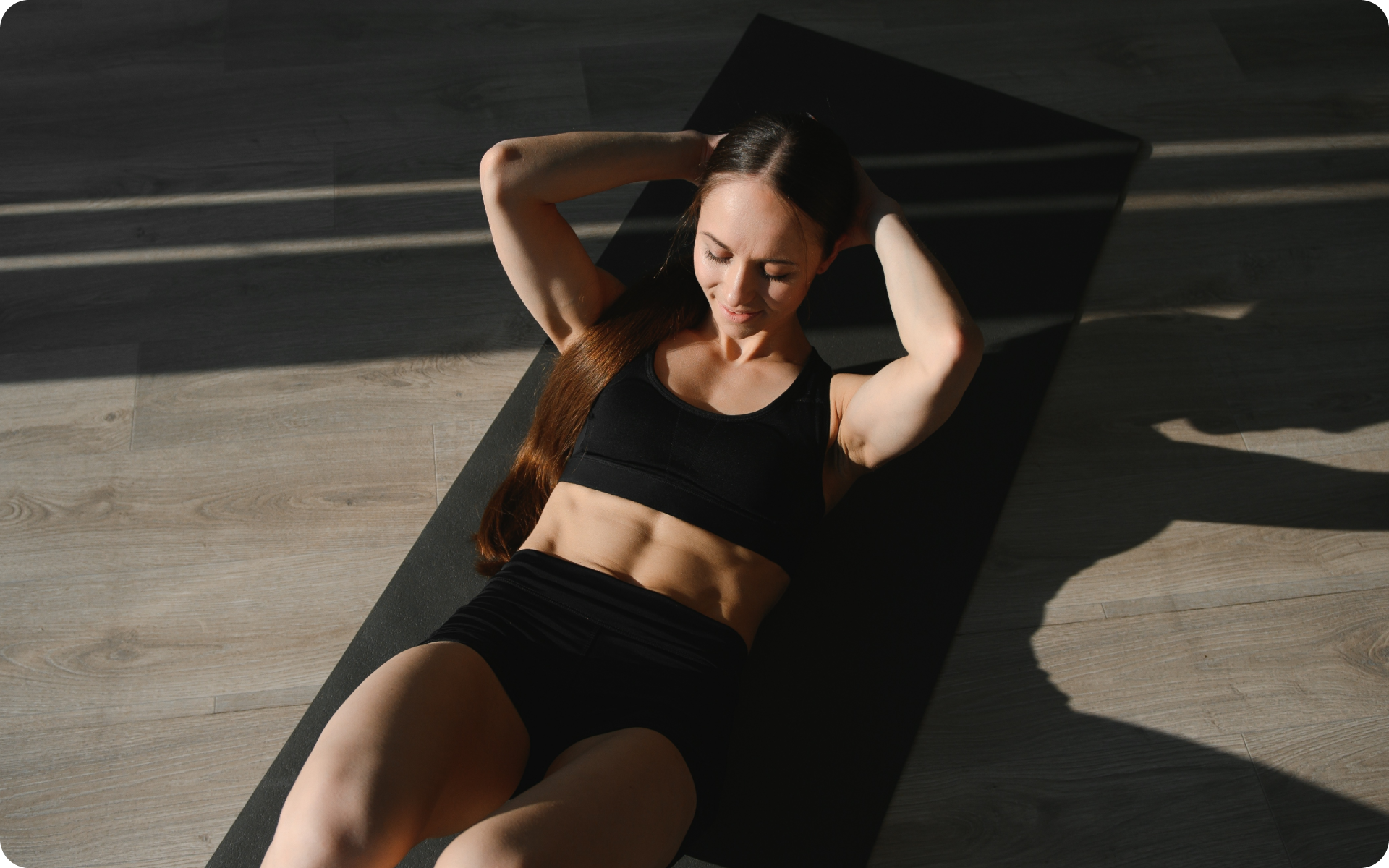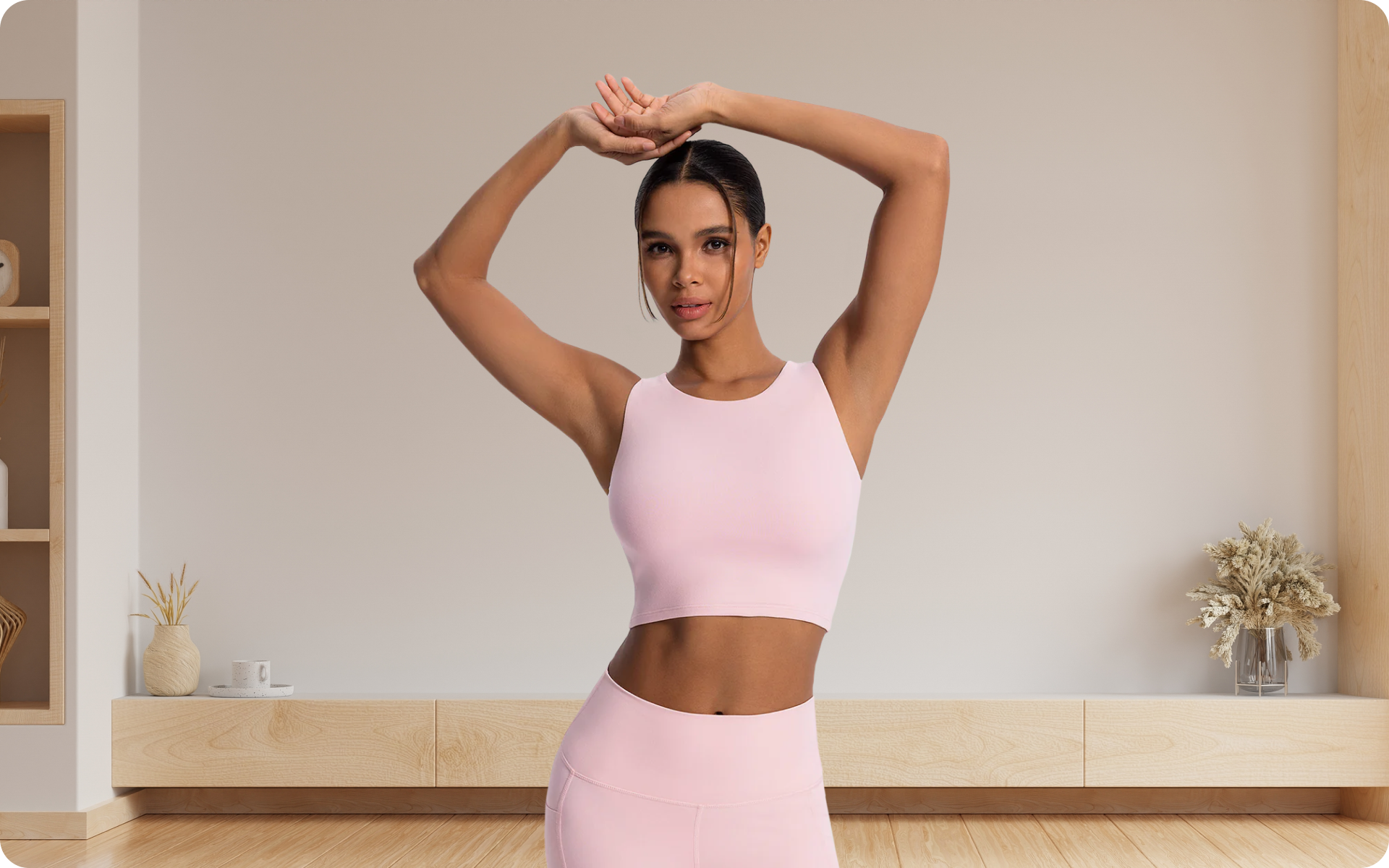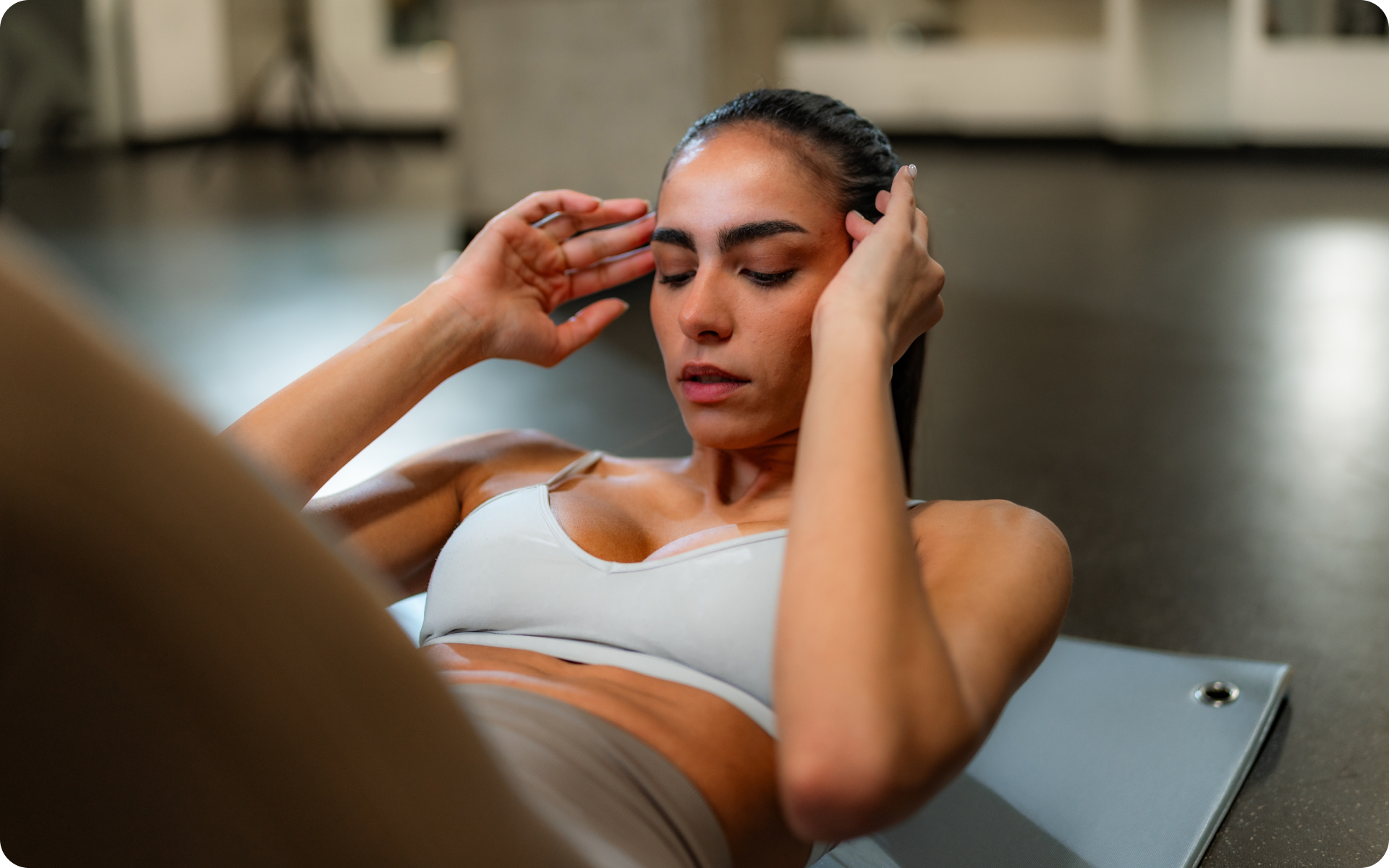Working toward a defined midsection is a common fitness goal, but it requires more than just endless crunches. A truly effective gym ab workout routine for beginners focuses on understanding the core muscles, applying progressive overload, and integrating smart training principles.
This guide will provide a clear, science-backed path to help you build a stronger, more visible set of abs.
We’ll cover the fundamental physiology of the abdominal muscles, the role of nutrition and overall training, and a detailed 4-exercise workout you can start today. By the end, you’ll have a comprehensive plan to effectively train your abs at the gym.
How to Get Abs at the Gym
Getting abs at the gym requires a two-pronged approach: targeted abdominal training to build the muscle and a reduction in body fat to reveal it. You cannot “spot reduce” fat from your stomach (1), but you can build the rectus abdominis – the “six-pack” muscles – so they become more prominent once your body fat percentage is low enough.
- Build the Abdominal Muscles
The first step is to treat your abs like any other muscle group. They need resistance and progressive overload to grow, a process that is known as hypertrophy (2). This means performing exercises that challenge your core and gradually increasing the difficulty over time. Simply doing hundreds of bodyweight crunches won’t provide enough stimulus for significant muscle growth.
Action Step: Incorporate weighted and resistance-based ab exercises into your routine 2-3 times per week. Focus on movements that target the different functions of your core, including flexion, rotation, and stability.
- Reduce Overall Body Fat
Visible abs are a direct result of having a low body fat percentage. For men, this is around 10-15% body fat, while for women, it’s closer to 15-20% (3). This is achieved primarily through nutrition and consistent, full-body exercise. A caloric deficit, where you consume fewer calories than you burn, is essential (4).
Action Step: Combine your ab training with a consistent strength training program and cardiovascular exercise. Monitor your diet to ensure you are in a slight caloric deficit while consuming enough protein (around 1.6-2.2 grams per kilogram of body weight) to support muscle growth and repair (5).
When it comes to weight loss, progress is made by inches, not miles, so it’s much harder to track and a lot easier to give up. The BetterMe: Health Coaching app is your personal trainer, nutritionist, and support system all in one. Start using our app to stay on track and hold yourself accountable!
- Be Consistent
Consistency is the most important factor. Building muscle and losing fat is a slow process that requires patience. Results won’t appear overnight. Sticking to your training and nutrition plan week after week is what will ultimately lead to a defined midsection.
Action Step: Create a realistic workout schedule and meal plan that you can adhere to in the long term. Track your progress not just by what you see in the mirror, but by improvements in your strength and performance.
Read more: How to Get a Snatched Waist: 10 Science-Backed Methods That Work
Can You Get Abs by Just Going to the Gym?
Yes, you can get abs by just going to the gym, as the gym provides all the necessary tools for both muscle building and fat loss. A well-structured gym routine allows you to target your abs with resistance, perform compound lifts that burn a significant number of calories, and use cardio equipment to further help create a caloric deficit.
The gym environment facilitates progressive overload, which is the key to abdominal hypertrophy (6). You can increase the weight on cable crunches, hold heavier dumbbells during Russian twists, or use advanced machines that are designed for core work. This level of progressive resistance is difficult to replicate with a gym ab workout routine at home.
Furthermore, full-body workouts centered around compound exercises such as squats, deadlifts, and overhead presses engage the core for stability (7). This means your abs get a secondary training stimulus, even when you’re not directly targeting them.
Those who are ready to maximize their ab development should check out our best 6-pack ab workout.
What Gym Workout Is Best for Abs?
The best gym workout for abs is one that incorporates a variety of movements that target all functions of the core under progressive overload. A quality routine should include exercises for spinal flexion, anti-extension, anti-rotation, and anti-lateral flexion (8). This ensures you’re developing a well-rounded, strong, and functional core, not just the visible “six-pack” muscles.
An effective workout will have these qualities:
- Progressive Overload: The workout must become more challenging over time. This can be achieved by increasing weight, adding reps, or reducing rest time (9).
- Variety: It includes a mix of exercises. For example, a crunch targets spinal flexion, a plank targets anti-extension, and a Pallof press targets anti-rotation.
- Intensity: The exercises should be performed with an intensity that brings the target muscles close to failure within a specific rep range (typically 8-20 reps for hypertrophy) (10).
- Frequency: The routine is performed 2-3 times per week, allowing for adequate recovery between sessions.
How Many Sets to Do per Exercise
As with other muscles, the abs require sufficient training volume to grow. A good starting point is to perform 2-4 sets per exercise. The total weekly volume for direct ab work should be around 10 sets for most individuals (11).
For a beginner, starting with the lower end of this range is advisable. For example, a workout consisting of 3 ab exercises, each performed for 3 sets, would total 9 sets. This is an excellent starting point. As you become more advanced, you can gradually increase the volume by adding more sets or another exercise.
The key is to ensure each set is performed with high effort, typically stopping 1-3 repetitions short of muscular failure. This provides the necessary stimulus for growth without causing excessive fatigue or compromising form (12).
Read more: Gym Workout to Lose Belly Fat and Tone Muscle
What Equipment at the Gym Is Best for Abs?
The gym offers a wide array of equipment that can be used for an effective abs workout. Using different tools helps introduce variety and new challenges to your routine.
Here are some of the best pieces of ab workout gym equipment:
- Cables: Cable machines are incredibly versatile for ab training. They provide constant tension throughout the movement. Exercises such as cable crunches and wood chops are staples.
- Dumbbells and Kettlebells: Free weights are perfect for adding resistance to movements such as Russian twists, goblet squats (which heavily engage the core), and side bends.
- Captain’s Chair / Vertical Knee Raise Station: This equipment is excellent for targeting the lower portion of the rectus abdominis with leg and knee raises, without putting strain on the lower back.
- Decline Bench: A decline bench increases the range of motion and difficulty of crunches and sit-ups, which leads to a greater muscle stimulus.
- Stability Ball: Performing exercises such as crunches or planks on a stability ball forces your core to work harder to maintain balance, engaging more stabilizer muscles.
What Is the Most Effective Gym Ab Workout Routine?
The most effective gym ab workout routine is one you can perform consistently with proper form and high intensity. Here’s a simple yet powerful 4-exercise routine that is designed for beginners to build a strong, defined core. Perform this routine 2-3 times per week, either at the end of your regular workout or on a separate day.
- Cable Crunches: 3 sets of 10-15 reps
- Captain’s Chair Leg Raises: 3 sets to failure (as many reps as possible with good form)
- Dumbbell Russian Twists: 3 sets of 12-15 reps per side
- Plank: 3 sets, hold for 30-60 seconds
Rest: Take 60-90 seconds of rest between sets.
Cable Crunch
This exercise targets the upper rectus abdominis with constant tension from the cable machine. It allows for easy progressive overload by simply moving the pin on the weight stack.
- Attach a rope handle to a high pulley on a cable machine.
- Kneel on the floor facing the machine, holding the rope handles on either side of your head.
- Keeping your hips stationary, contract your abs to pull your elbows down toward your knees.
- Focus on crunching with your abdominal muscles, not pulling with your arms.
- Pause at the bottom, then slowly return to the starting position.
Captain’s Chair Leg Raise
This is one of the best exercises for targeting the lower abs. It isolates the core without straining the hip flexors as much as other leg raise variations.
- Position yourself in the Captain’s Chair with your back against the pad and your forearms resting on the arm pads.
- Allow your legs to hang straight down.
- Engage your abs and raise your legs up until they are parallel to the floor. Keep them as straight as possible.
- Slowly lower your legs back to the starting position under control. Avoid swinging.
Reasons why BetterMe is a safe bet: a wide range of calorie-blasting workouts, finger-licking recipes, 24/7 support, challenges that’ll keep you on your best game, and that just scratches the surface! Start using our app and watch the magic happen.
Dumbbell Russian Twist
The Russian twist is a classic exercise for targeting the obliques, the muscles on the sides of your core. Adding a dumbbell increases the challenge.
- Sit on the floor with your knees bent and your feet slightly off the ground.
- Hold a dumbbell with both hands in front of your chest.
- Lean back slightly to engage your core, keeping your back straight.
- Twist your torso to one side, bringing the dumbbell toward the floor.
- Return to the center and then twist to the other side. This completes one rep.
Plank
The plank is an isometric exercise that builds endurance and stability throughout the entire core, including the deep transverse abdominis.
- Position yourself on the floor in a push-up position.
- Lower yourself onto your forearms, ensuring your elbows are directly under your shoulders.
- Your body should form a straight line from your head to your heels.
- Engage your core and glutes to prevent your hips from sagging.
- Hold this position for the designated time.
If you have specific concerns about your midsection, such as an “apron belly”, consider integrating targeted apron belly exercises into your plan.
How to Track Progress in a Gym Ab Workout Routine
Tracking your progress is essential for remaining motivated and ensuring your program is effective.
Here are practical indicators of progress:
- Increased Reps or Weight: You can perform more reps with the same weight or increase the weight for the same number of reps. This is a direct measure of increased strength.
- Longer Holds: For isometric exercises such as the plank, you can hold the position for a longer duration.
- Improved Form: Your technique becomes cleaner and more controlled, allowing you to better isolate the target muscles.
- Visual Changes: While this takes the longest, taking weekly progress photos can help you notice subtle changes in your midsection over time.
- Waist Measurement: A decreasing waist measurement is a clear sign of fat loss.
For those who are short on time, even a short ab workout performed consistently can yield great results.
Achieving visible abs in 30 days is unrealistic for most people. It’s only possible if you already have a low body fat percentage and well-developed abdominal muscles. For the average beginner, building the necessary muscle and losing enough body fat to see abs takes several months, not weeks. Training your abs every day isn’t optimal. As with any other muscle, your abs need time to recover and grow. Overtraining can lead to fatigue and hinder progress (13). A frequency of 2-4 times per week is sufficient for stimulating muscle growth while allowing for adequate recovery (14). Planks are an excellent exercise for building core stability and endurance (15), but they aren’t the most effective for building the visible “six-pack” muscles. To develop the rectus abdominis for a defined look, you need to include exercises that involve spinal flexion with added resistance, such as weighted crunches. There is no single “best” piece of equipment for belly fat. Fat loss cannot be targeted in a specific area. The best approach is to use a combination of equipment for a well-rounded routine: cable machines for resistance exercises such as crunches, the Captain’s Chair for leg raises, and cardio machines such as the treadmill or elliptical to help create a caloric deficit for overall fat loss.Frequently Asked Questions
Is visible abs in 30 days achievable?
Can you train your abs every day?
Do planks give you abs?
Which gym equipment is best for belly fat?
The Bottom Line
Building a strong and defined core is an achievable goal if you have the right approach. This gym ab workout routine for beginners will lay a solid foundation based on proven training principles. Remember that success hinges on the combination of targeted muscle building, consistent fat loss through nutrition, and unwavering patience.
Focus on mastering the form of each exercise, applying progressive overload, and tracking your progress. By doing this, you’re not just chasing an aesthetic goal, you’re building a stronger, more functional body from the core out.
DISCLAIMER:
This article is intended for general informational purposes only and does not serve to address individual circumstances. It is not a substitute for professional advice or help and should not be relied on for making any kind of decision-making. Any action taken as a direct or indirect result of the information in this article is entirely at your own risk and is your sole responsibility.
BetterMe, its content staff, and its medical advisors accept no responsibility for inaccuracies, errors, misstatements, inconsistencies, or omissions and specifically disclaim any liability, loss or risk, personal, professional or otherwise, which may be incurred as a consequence, directly or indirectly, of the use and/or application of any content.
You should always seek the advice of your physician or other qualified health provider with any questions you may have regarding a medical condition or your specific situation. Never disregard professional medical advice or delay seeking it because of BetterMe content. If you suspect or think you may have a medical emergency, call your doctor.
SOURCES:
- A proposed model to test the hypothesis of exercise-induced localized fat reduction (spot reduction), including a systematic review with meta-analysis (2022, hummov.awf.wroc.pl)
- The Mechanisms of Muscle Hypertrophy and Their Application to Resistance Training (2010, journals.lww.com)
- Normal ranges of body weight and body fat (n.d., us.humankinetics.com)
- “Calories in, calories out” and macronutrient intake: the hope, hype, and science of calories (2017, journals.physiology.org)
- International Society of Sports Nutrition Position Stand: protein and exercise (2017, pmc.ncbi.nlm.nih.gov)
- Effects of Resistance Training Overload Progression Protocols on Strength and Muscle Mass (2024, pubmed.ncbi.nlm.nih.gov)
- Compound Exercises (n.d., physio-pedia.com)
- Core Stability Exercises: Targeting Progressive Core Training (n.d., blog.nasm.org)
- Progressive Overload Explained: Grow Muscle & Strength Today (n.d., blog.nasm.org)
- Loading Recommendations for Muscle Strength, Hypertrophy, and Local Endurance: A Re-Examination of the Repetition Continuum (2021, pmc.ncbi.nlm.nih.gov)
- Resistance Training Variables for Optimization of Muscle Hypertrophy: An Umbrella Review (2021, frontiersin.org)
- Muscle Failure Promotes Greater Muscle Hypertrophy in Low-Load but Not in High-Load Resistance Training (2022, journals.lww.com)
- Overtraining Syndrome as a Complex Systems Phenomenon (2022, frontiersin.org)
- No Time to Lift? Designing Time-Efficient Training Programs for Strength and Hypertrophy: A Narrative Review (2021, link.springer.com)
- Strength and Balance Improvement with Plank Exercise Variations (2023, researchgate.net)
